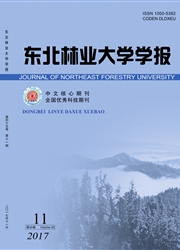

 中文摘要:
中文摘要:
Video sensors and agricultural IoT(internet of things) have been widely used in the informationalized orchards.In order to realize intelligent-unattended early warning for disease-pest,this paper presents convolutional neural network(CNN) early warning for apple skin lesion image,which is real-time acquired by infrared video sensor.More specifically,as to skin lesion image,a suite of processing methods is devised to simulate the disturbance of variable orientation and light condition which occurs in orchards.It designs a method to recognize apple pathologic images based on CNN,and formulates a self-adaptive momentum rule to update CNN parameters.For example,a series of experiments are carried out on the recognition of fruit lesion image of apple trees for early warning.The results demonstrate that compared with the shallow learning algorithms and other involved,wellknown deep learning methods,the recognition accuracy of the proposal is up to 96.08%,with a fairly quick convergence,and it also presents satisfying smoothness and stableness after convergence.In addition,statistics on different benchmark datasets prove that it is fairly effective to other image patterns concerned.
 英文摘要:
英文摘要:
Video sensors and agricultural IoT ( internet of things) have been widely used in the informa-tionalized orchards.In order to realize intelligent-unattended early warning for disease-pest, this pa-per presents convolutional neural network ( CNN) early warning for apple skin lesion image, which is real-time acquired by infrared video sensor.More specifically, as to skin lesion image, a suite of processing methods is devised to simulate the disturbance of variable orientation and light condition which occurs in orchards.It designs a method to recognize apple pathologic images based on CNN, and formulates a self-adaptive momentum rule to update CNN parameters.For example, a series of experiments are carried out on the recognition of fruit lesion image of apple trees for early warning. The results demonstrate that compared with the shallow learning algorithms and other involved, well-known deep learning methods, the recognition accuracy of the proposal is up to 96.08%, with a fairly quick convergence, and it also presents satisfying smoothness and stableness after conver-gence.In addition, statistics on different benchmark datasets prove that it is fairly effective to other image patterns concerned.
 同期刊论文项目
同期刊论文项目
 同项目期刊论文
同项目期刊论文
 期刊信息
期刊信息
